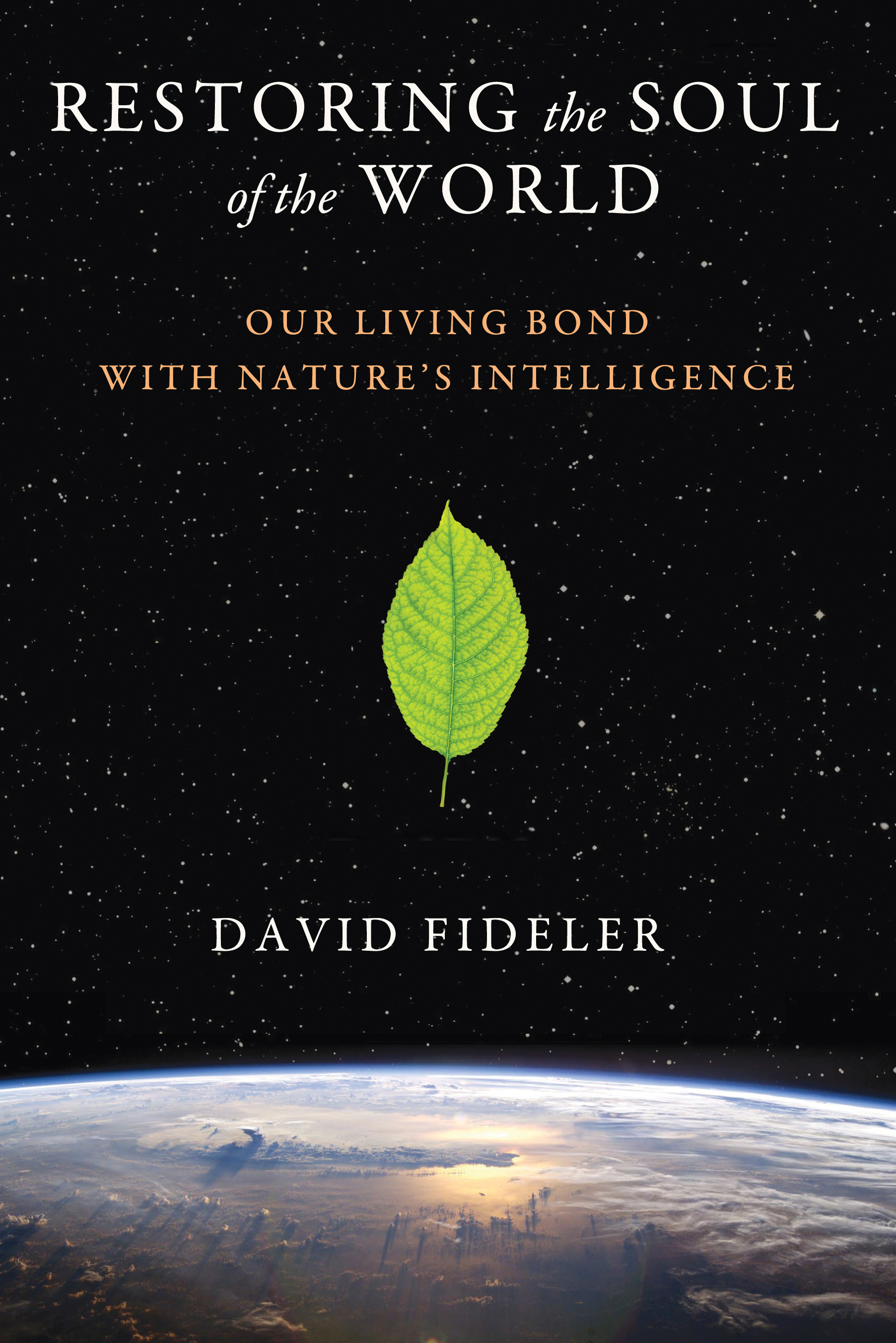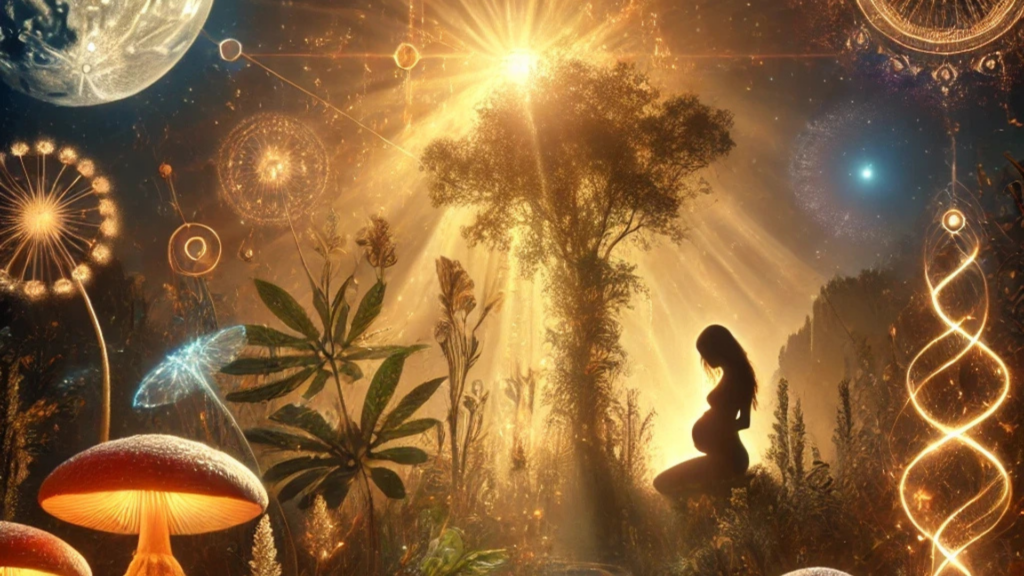The following is excerpted from Restoring the Soul of the World: Our Living Bond with Nature’s Intelligence, published by Inner Traditions.
The old part of the city where I now live, Sarajevo in southeastern Europe, is one of the most beautiful cities on Earth, especially if you love architecture and a tangible sense of the past. A meeting place between East and West, Sarajevo is like a kind of Alexandria, where different cultures came together and intermingled. Located in a valley surrounded by mountains, Sarajevo was the northern boundary of the Ottoman Empire, the southern boundary of the Austro-Hungarian Empire, the eastern boundary of the Roman Catholic Church, and the western boundary of the Eastern Orthodox Church. For about five hundred years, Christians and Muslims lived a common life together in harmony, until the terrible and pointless siege of Sarajevo, lasting from April 1992 to February 1996, during the breakup of the former Yugoslavia. During that period, hundreds of artillery shells rained down on Sarajevo each day from the hills above, great damage was inflicted on the city and its heritage, and 11,500 Sarajevo residents lost their lives—while the rest of the world sat by and watched without intervening for years.
Since the war ended, and perhaps against great odds, the city has come back to life. While scars remain, the ancient buildings have been repaired, the city is alive with a vibrant café culture, and Sarajevo is once again one of the most beautiful places on Earth. Each day you can hear church bells ring and the call to prayer echo out from minarets. The nearly miraculous power of regeneration exists in all things; and living systems, even if damaged severely, can be incredibly resilient.
Like the city of Sarajevo, the living systems of the Earth have been under attack, too, as human population has skyrocketed and our ecological footprint has expanded exponentially. During this same period, we have found ever-more efficient ways of turning nature’s gifts into human commodities on a vast, industrial scale. We live at a unique point in the Earth’s history when, in the words of Paul Hawken, “During the last fifty years every living system on earth has been in decline, and the rate of decline has been speeding up.”25 At the same time this is happening, our human demands on the biosphere are increasing exponentially, even faster than population growth. Just a short list of key statistics26 helps to make clear what is happening at our point in time:
• Between 1975 and 2000, total material consumption in the United States grew at more than twice the rate of population growth.27
• During the past 50 years, humans have consumed more resources than in all previous history. Between 1970 and 1995 alone, worldwide consumption of raw materials (not including food and fuel) doubled.28
• Human beings currently consume 40 percent of all organic matter produced by photosynthesis on Earth, leaving what remains for other species.29
• Habitat destruction has contributed to species disappearance at rates about a thousand times faster than normal.30 Once a species is extinct, it is gone forever.
• Due to human activity, forest cover has been reduced by at least 20 percent and as much at 50 percent worldwide.31
• Half of the world’s wetlands are estimated to have been lost in the twentieth century.32
• Globally, vertebrate populations were on average one-third smaller in 2008 than they were in 1970.33
• Freshwater fish and amphibians are under threat around the world. In the United States, for which good data exists, 37 percent of freshwater fish species and 40 percent of amphibians are threatened or have become extinct.34
• 24 percent of all mammal species face extinction in 30 years.35
• 70 percent of biologists believe that we are in the midst of the fastest mass extinction in the Earth’s history, and the only one due to human activity; they also believe that this loss of species diversity poses a threat to human life over the long term.36
• “Ecological overshoot” means that it now takes 1.5 years for the Earth to regenerate the renewable resources that people use, and to absorb the CO2 waste they produce, in a single year.37
• If everyone on the planet lived like an average resident of the United States, a total of four Earths would be now required to regenerate humanity’s annual demand on nature.38
Ecological sustainability was first defined in a 1987 report of the World Commission on Environment and Development in the following way: “Sustainable development is development that meets the needs of the present without compromising the ability of future generations to meet their own needs.”39 While “sustainability” is perhaps a starting point, this bland and unimaginative definition can also be used as a way of maintaining the status quo. Taking a look at some of the statistics highlighted above, and all of the damage that has been done, no one in their right mind should want to maintain this level of environmental degradation for future generations, but to reverse it, helping to restore our damaged ecosystems to flourishing health. What we need is ecological restoration and regeneration, not “sustainability.” Given the damage that has already occurred, each generation should now aim to leave our planetary biosystems in a better and healthier condition for the generations that follow.
Regenerative ecological design is not only possible, but proven. As the work of John Todd shows, we already possess the knowledge needed to restore poisoned lakes and rivers, to bring dead bodies of water back to life. We already know how to create homes that require no fossil fuels for heating. Located at Snowmass, Colorado, high in the Rocky Mountains, the superefficient and superinsulated home of Amory Lovins is solar-heated, with a built-in tropical greenhouse to store solar energy (see figure 13.4 on page 252). Not only does the home stay comfortable when the outside temperature is –40 degrees Fahrenheit, it also produces banana crops, even in the dead of winter. Each year, the building saves at least $7,100 in energy costs, or about $19 per day—“economically equivalent to the output of a barrel-per-day oil well; but unlike oil, it doesn’t pollute, can’t be interrupted, and won’t run out.”40 Ultimately, the energy savings will pay for the entire cost of the building. This is regenerative design in action, the type of design now being championed by the Living Building Challenge, in which buildings must capture their own energy, clean their own water, promote health and human well-being, and be beautiful and inspirational, leading us to higher levels of awareness and action.41
Finding fault with the notion of “sustainability,” ecological designer and architect Sim Van der Ryn speaks instead of surpassability, describing four different kinds of buildings: Standard, Green, Restorative, and Regenerative (see figure 13.5). Green building reacts to standard construction, seeking to utilize more efficient systems and materials, to limit the impact of constructed environments on nature, but doesn’t fully draw on nature’s intelligence. Restorative Buildings seek to reestablish the connection between buildings and natural processes, while Regenerative Buildings:
reconnect humans with the community and environment. Long-term human needs are valued over short-term expedience solutions. Occupants feel empowered to regenerate their community and build interconnected relationships with their neighbors through active participation with government and society. Buildings suggest growth and rebirth while contributing to the community’s energy supply rather than depleting it. Spaces inspire justice, uplift spirits, calm stress and comfort pain.42
Not only is regeneration possible in the human sphere, it is possible in the biosphere. Thousands of years ago, the Sahara desert had a lush, tropical climate, with trees, lakes, grasslands, wildlife, and a human population. Using ecological design principles, even arid desert areas can once again become fertile. While species loss is forever, as John Todd’s work shows, with a helping hand from humans, the natural world can regenerate itself in much shorter periods of time than anyone thought possible. This regeneration occurs not through a process of technological control, but through a living partnership in which we are able to hear, learn from, and actively collaborate with nature’s intelligence and the living world.
As we have learned, when we gaze upon the world from a distance and objectify it as if we were distant spectators, it becomes an object of exploitation. But when we relate to the world with a spirit of engagement, both we and the world are transformed through a spirit of creative collaboration.
Cultivating Nature and the Restoration of Paradise
Hundreds of years ago, some of the first travelers to reach Sarajevo described it as resembling a terrestrial paradise. They were particularly impressed by the myriad fountains, to be found in public places and the inner courtyards of private homes. As one writer reported in the 1600s, in the city “are a hundred and ten fountains of running water, and there is besides abundant running water, and in the surroundings are twenty-six thousand gardens of paradise adorned with water, fountains, arbors and summer houses.”43 Writing about the same time, a poet also noted, “Here it seems one could live long, for in a thousand places around Sarajevo flow fountains from the spring of immortality.”44
While some of those fountains still remain, many have disappeared. In their place we come upon something beautiful—roses. From springtime through the first frosts of winter, public spaces and small private gardens in the old neighborhood districts are unexpectedly ablaze with roses. Despite the beautiful architecture here, city streets can be harsh and gritty. Coming upon a stand of roses in a private garden, a schoolyard, or the courtyard of a mosque (where they are always found), makes the grittiness of urban life fall away. This encounter transports the mind, arresting it, and invites us to contemplate the beauty of nature, in which we participate, and which extends far beyond us too. In some sense, the roses and the mountains are the saviors of Sarajevo, keeping the city from becoming too disconnected from nature.
If the image of the entire living Earth seen from space is an emblem of our new worldview, I hope another image of our relationship with nature will be that of the garden. Not surprisingly perhaps, since the entire focus of alchemy was on “cultivation” and “working in collaboration with nature,” one of the common symbolic images of alchemy was “the rose garden of the philosophers.” Similarly, in the desert-born monotheistic religions of Judaism, Christianity, and Islam, the garden was an image of paradise—the Garden of Eden—and the word paradise itself comes from an old Persian word meaning “a walled garden or orchard.”45 In our human experience, perhaps paradise represents a type of preconscious wholeness or perfection, in which everything feels just right, just the way it’s supposed to be.
In his beautiful book Gardening as a Sacred Art, philosopher Jeremy Naydler discusses the history of gardening as a way of understanding the changing qualities of human consciousness and our changing relationship with nature. In very ancient times spirits, and for the Egyptians, the gods, were present in the landscape. For the Egyptians, “The garden was truly where the human and divine worlds met.”46 Later in medieval times, the hortus conclusus, the “enclosed” or “walled” garden that became popular in the twelfth century, was “meant primarily as a place of spiritual contemplation, and this was because its features . . . intended to recall Paradise to those who stepped inside it.”47 As many people instinctively realize, to be in a garden is one way to taste the sacred, to experience a memory of paradise.
Regardless of what modern people may think about God (which has for many become a concept), I think it is very important for us modern people to understand and embrace the experience of the sacred, which, at its core, is not a concept, but a human experience of belonging to a larger reality that transcends our limited selves. The experience of the sacred takes us beyond ourselves, linking us with the experience of other people in all times and places. Going back to their deepest, most central meanings, the ancient root of the word divine means “to shine,” while the ancient root of the word holy gave birth to other common words, too: whole, heal, health, and wholesome.48 When we experience the sacred, we sense the luminous nature of reality, a divine light shining into human life, connecting us with a greater whole. By definition, that which is sacred or holy is “worthy of veneration,” and veneration is love. If we are unable to sense the sacred in nature, we will have no love for the world; and without love, the world will not be worth saving. And without the devotion and dedication engendered by love, nothing else is worth doing either.
During the course of my life, there have been many times I’ve experienced a taste of paradise in the garden of nature, sitting outside, either alone or with a friend. On many occasions I’ve meditatively played a musical instrument outside, only to have the birds, frogs, and crickets respond. Together, we created music—a magical back-and-forth collaboration with nature’s symphony.
In the experience of paradise, we immediately appreciate our own presence in the sacred radiance of nature’s beauty, savoring the completeness, wholeness, and perfection of life at that very moment. Sensing the world as it is, and our deep kinship with this reality, there is no felt need to transform it into something else, which is why such moments feel perfect. When we are wholly present to the beauty and vitality of the living world, we appreciate it fully for its unique, irreplaceable value.
As Jeremy Naydler shows, during the period in which the Cartesian and Newtonian worldview began to emerge, there was a major shift in the design of gardens, reflecting humanity’s changing relation with nature. Vast formal gardens, like the gardens at Versailles in France, became highly geometrical and imperial enterprises, designed not to highlight or to enhance nature’s beauty, but to illustrate humanity’s glory and power over nature. Later in the Romantic period, a significant shift occurred in which some gardeners began to see themselves working in collaboration with nature’s creative spirit, to cultivate nature, and to help its beauty shine forth. One of these pioneers of gardening as a sacred art was William Robinson (1838–1935), who also introduced the idea of the wild garden, human gardens that enhance and blend into the natural landscape.
As Naydler notes, discussing the wild garden at Heaselands, Sussex,
all this beauty has been achieved not by unaided Nature, but also through creative human involvement. It is only through the co-operative effort of human beings with Nature that this kind of Paradisal environment can come into being. We notice, too, that this wild garden is outside the borders of a garden as conventionally understood. Robinson believed there was no need to restrict gardening to conventionally demarcated garden areas, because for him the whole world was a garden. Thus the beauty of fields, meadows and woodlands could all be enhanced through such sensitive human participation.49
As both a symbol and a reality, a garden represents the meeting point between humanity and nature. Through a garden, humanity is brought in relationship to nature; nature is consciously brought in relation to humanity; and humanity and nature emerge as co-creators in a work of divine beauty.
While the garden may remind one of the timeless, intoxicating beauty of paradise—the sound of trickling water, birds singing, and the perfume of flowers—it invites us to experience that divine beauty here on Earth, in the here and now, as it shines through and enlivens the fabric of our lives. Similarly, as a garden cannot exist without human care, it invites us to enter into a living, collaborative relationship with both nature and society.
If we could see the entire Earth as a garden—as a living but damaged paradise, worthy of love and admiration—we could then act as gardeners, working in collaboration with the soul of the world. In this role, we could creatively participate in the cultivation of all life, and help to restore nature’s beauty, fertility, and resilience where it has been lost.
Notes
25.Hawken, “Natural Capitalism: Brother, Can You Spare a Paradigm?,” 148.
26.For reliable statistics about the planetary environment, see World Resources Institute, A Guide to World Resources 2000–2001: People and Ecosystems; The Fraying Web of Life (available at: www.wri.org/publication/
world-resources-2000-2001-people-and-ecosystems-fraying-web-life); the Global Environment Outlook reports published by the United Nations Development Programme (most recently GEO5, available at: www.unep
.org/geo/geo5.asp); the Living Planet Reports published by the World Wildlife Foundation (available at: http://wwf.panda.org/about_our_earth/all_publications/living_planet_report); the State of the World Reports published and available for sale from Worldwatch Institute (www.world watch.org/bookstore/state-of-the-world) along with their publication Vital Signs (http://vitalsigns.worldwatch.org). A useful publication listing statistics from reliable sources is Environmental Facts: Facts and Figures to Inspire Action toward Zero Waste, available from Eco-Cycle at http://ecocycle.org/files/pdfs/Eco-CycleEnvironmentalFacts.pdf. Information and articles regarding species extinction can be found at the Species Alliance website: http://speciesalliance.org.
27.World Resources Institute, Materials Flows in the United States: A Physical Accounting of the U.S. Industrial Economy (Washington, D.C.: World Resources Institute, 2008), chapter 1. Available at: http://pdf.wri.org/mate rial_flows_in_the_united_states.pdf.
28.United States Environmental Protection Agency, Sustainable Materials Management: The Road Ahead (2009), 4 (www.epa.gov/smm/pdf/vision2
.pdf).
29.Wilson, The Future of Life, 33.
30.United States Environmental Protection Agency, Sustainable Materials Management, 5.
31.World Resources Institute, A Guide to World Resources 2000–2001, 51.
32.Ibid., 104.
33.United Nations Development Programme, Global Environment Outlook 5 (2012), 134.
34.World Resources Institute, A Guide to World Resources 2000–2001, 116.
35.United Nations Environment Programme report cited by BBC science correspondent Corinne Podger in “Quarter of Mammals ‘Face Extinction,’” http://news.bbc.co.uk/2/hi/science/nature/2000325.stm. See also United Nations Environment Programme, Global Environment Outlook 3 (2002); available online at www.unep.org/geo/geo3.asp.
36.Of the four hundred biologists questioned in the Biodiversity in the Next Millennium survey, “the majority (70 percent) think that during the next thirty years as many as one-fifth of all species alive will become extinct, and one third think that as many as half of all species on Earth will die out in that time.” American Museum of Natural History press release, April 20, 1998 (archived at www.mysterium.com/amnh.html).
37.World Wildlife Foundation, Living Planet Report 2012: Biodiversity, Biocapacity, and Better Choices, 40; see also “World Footprint,” www.footprint network.org/en/index.php/gfn/page/world_footprint.
38.World Wildlife Foundation, Living Planet Report 2012, 43.
39.For a discussion of different concepts of sustainability, see Van der Ryn and Cowan, Ecological Design, chapter 1.
40.Rocky Mountain Institute, Visitor’s Guide, 70.
41.To learn more about the Living Building Challenge, visit: http://living future.org/lbc/about.
42.Noble, “Regenerative Design,” summarizing a presentation by Sim Van der Ryn, “Surpassability: The Future We Can Create Now,” given at the Environmental Design Research Association annual conference in 2007 (EDRA 38).
43.Evliya Çelebi (1611–1682), quoted in an exhibit on “Piped Water and the Cult of Water,” Museum of Sarajevo, Bosnia and Herzegovina.
44.Muhamed Nerkesija (ca. 1584–ca. 1635), quoted in an exhibit on “Piped Water and the Cult of Water,” Museum of Sarajevo, Bosnia and Herzegovina.
45.See Delumeau, History of Paradise: The Garden of Eden in Myth and Tradition, 4.
46.Naydler, Gardening as a Sacred Art, 20.
47.Ibid., 36.
48.See Watkins, editor, American Heritage Dictionary of Indo-European Roots, for the roots of divine (deiw-) and holy (kailo-).
49. Naydler, Gardening as a Sacred Art, 87.














